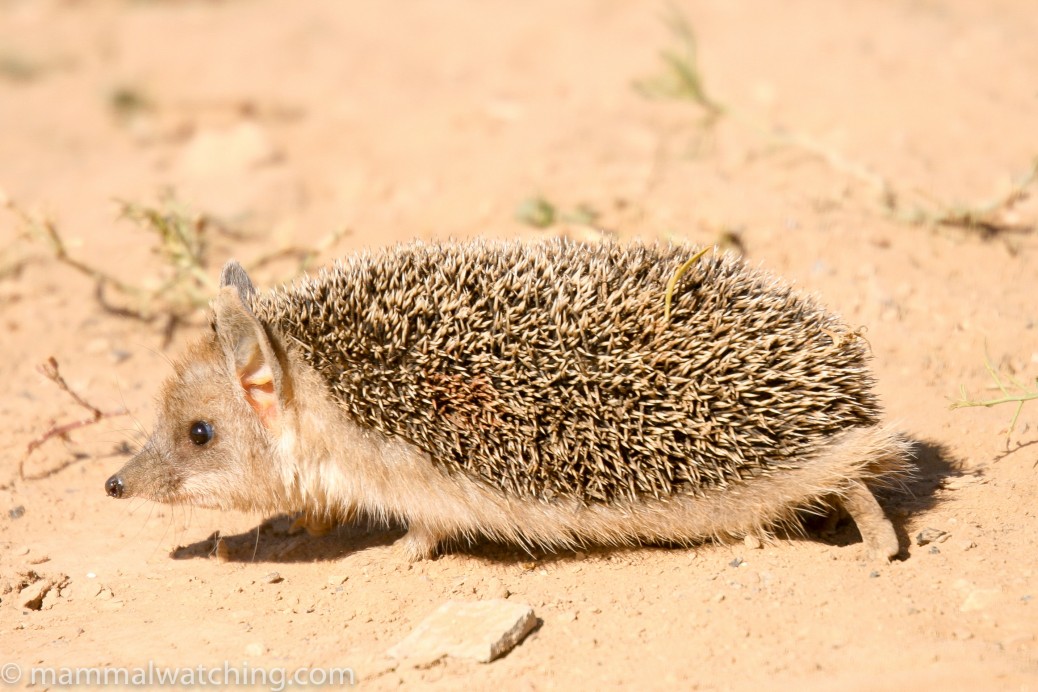
Russia
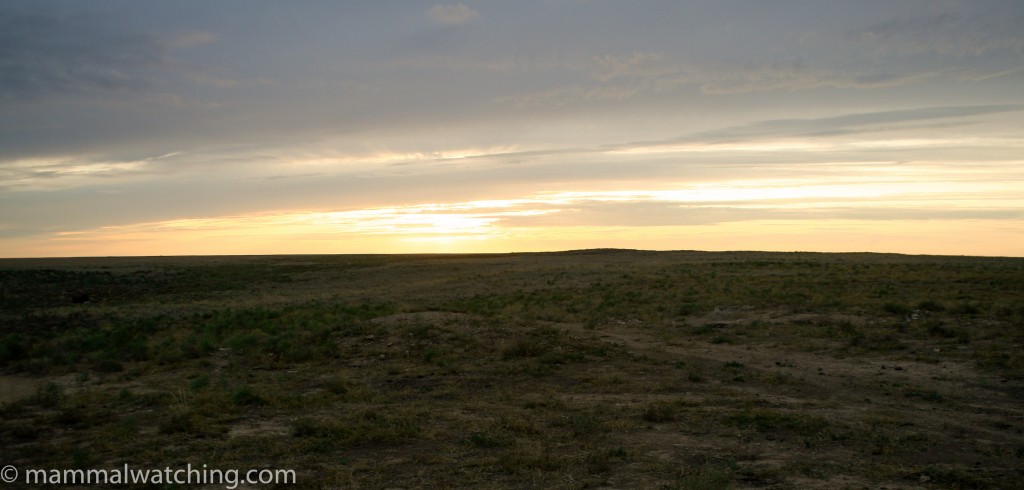
Cherny Zemly Biosphere Park
I visited Moscow twice in 2008. It has more than its fair share of expensive hotels, traffic jams and beautiful women. There are a few mammals in the city parks, or so I was told, but I only explored Kolomensky Park which was reputed to be home to wild hamsters. I couldn’t find any.
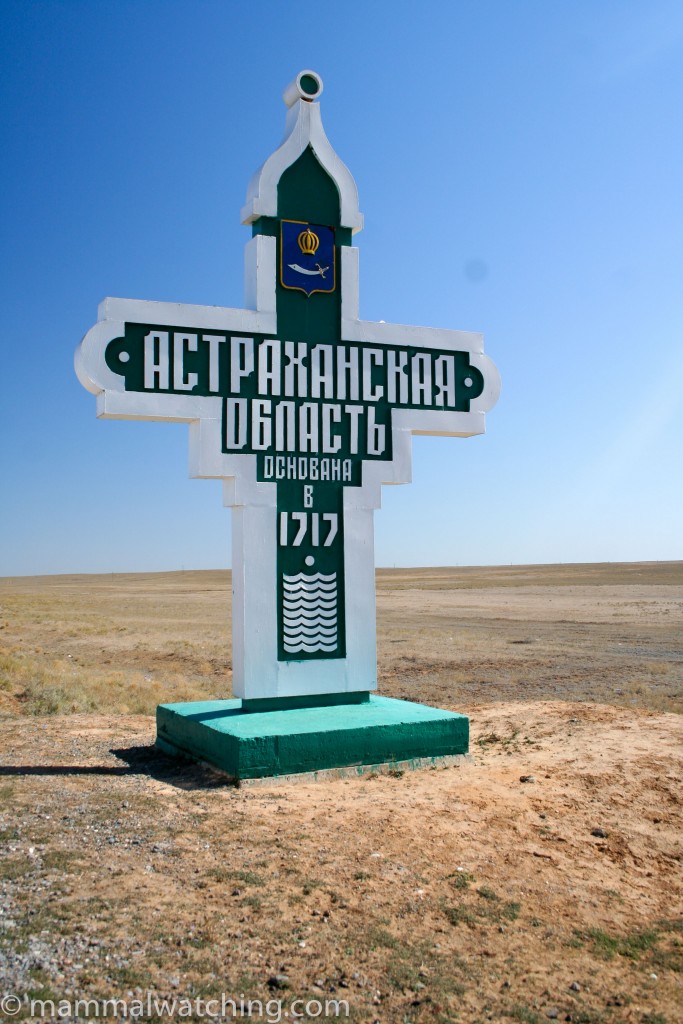
Welcome to Kalmykia
Kalmykia
In October 2008 I flew to Astrakhan and visited Cherny Zemli Biosphere Park on the Kalmykia steppes to look for mammals, primarily Saiga. The Kalmykian Steppes don’t see many tourists. Over the past 10 years fewer than 50 people a year on average have been to Cherny Zemli, and only 3 of them each year were from outside Russia. Most of these would have been researchers I reckon.
I organised the trip through Russia’s Ecological Travel Center who were just fantastic. They speak perfect English, always replied quickly and helped make changes at the last minute to my plans. Trips to Cherny Zemli are not part of their standard set of tours so they had to arrange everything from scratch.

I have no idea what this flaming pipe was all about … but it looked cool
Astrakhan is a pleasant city on the river Volga. If you need to stay there, the Delta Spa Hotel was great,with good rooms and very hospitable owners. The Cherny Zemli reserve is a three hour drive from Astrakhan, the last 45 minutes of which are on a dirt track through the steppes.
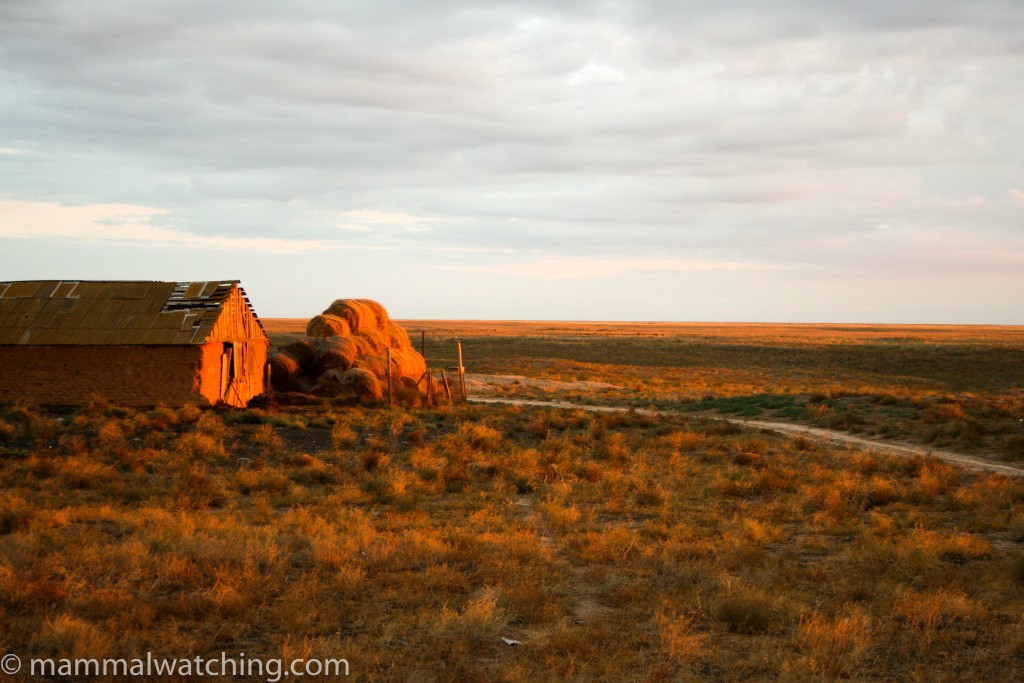
Park HQ, Cherny Zemli
I stayed in an old cottage that is the park HQ (though “HQ” is overdoing a bit I think). There was no running water and the generator came on for just two hours each evening. The park staff spoke no more than a handful of words of English. I was lucky because a researcher from Kalmykia University – Yonio – was staying. He spoke some English, though there was still plenty of space for confusion. It is, however, a beautiful spot. The praries went on for ever, and the sunset and night skies were superb. We had great food and plenty of vodka that first night. The same food, however, remained on the table for the duration of my stay so the novelty wore off fairly fast.
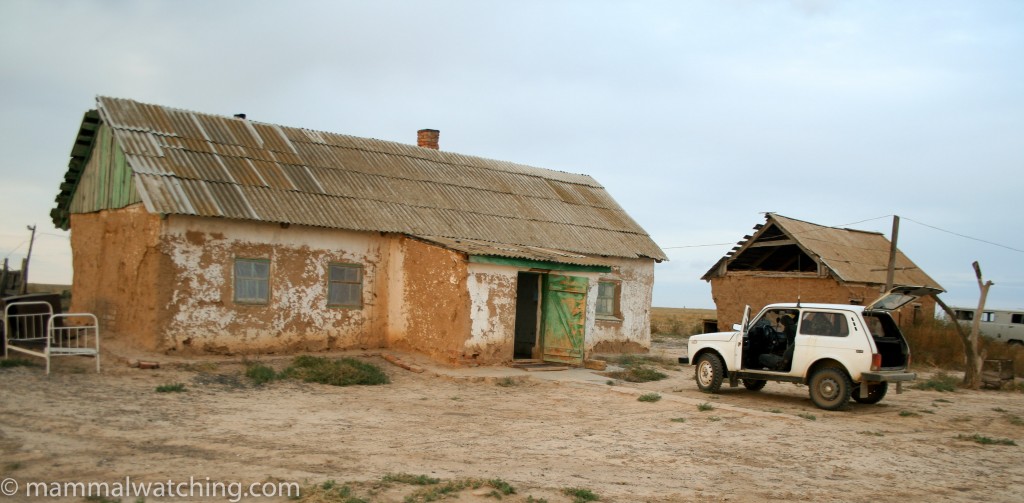
The rustic accommodation
Saiga were easy to see but hard to get close to and to photograph. Saigas have had an interesting history in the 20th century. Virtually extinct in 1917 their numbers recovered so much that by the 1980s there were millions on the steppes. But selective hunting of the males – their horns are used in Chinese medicine – led to a huge gender imbalance and Saiga numbers crashed. They also suffered mysterious mass fatalities in recent years (with a particular severe one in 2015).
They are strange looking beasts and run like the clappers. Just about all the animals we saw – and we saw hundreds – charged off through the dust at 80 kmh. They hold their heads low so their gait – like their looks – is odd.

Saigas, Saiga tatarica
They were easier to approach in the dark. But even then they wouldn’t stay long in the spotlight before hooning off.
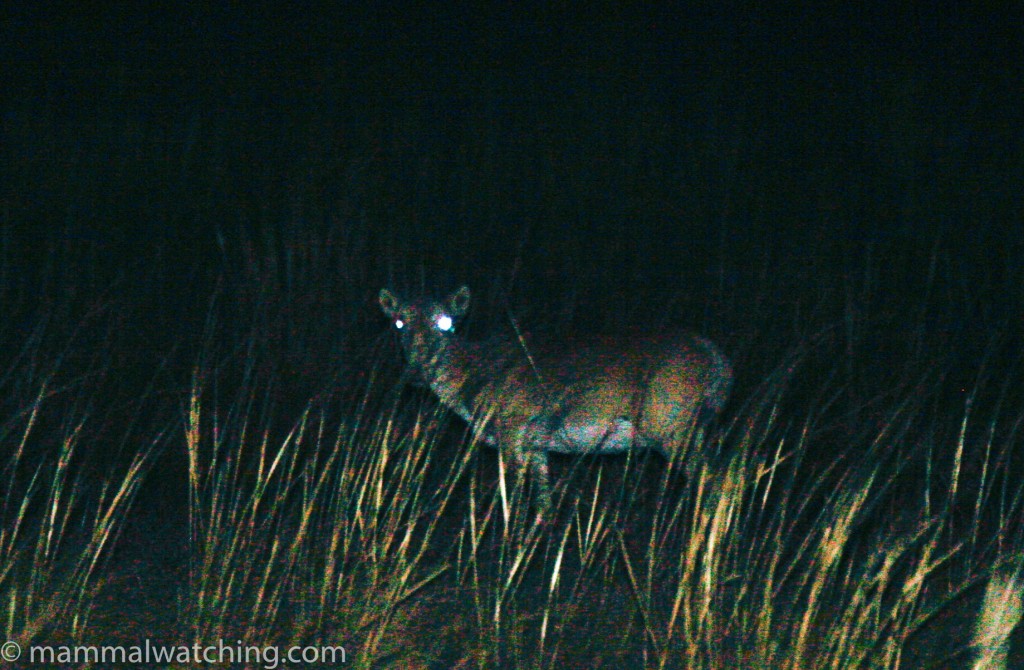
Saigas, Saiga tatarica
During a morning’s Saiga spotting we saw a couple of Red Foxes, but no other mammals. Marbled Polecats, while not common, are a possibility.
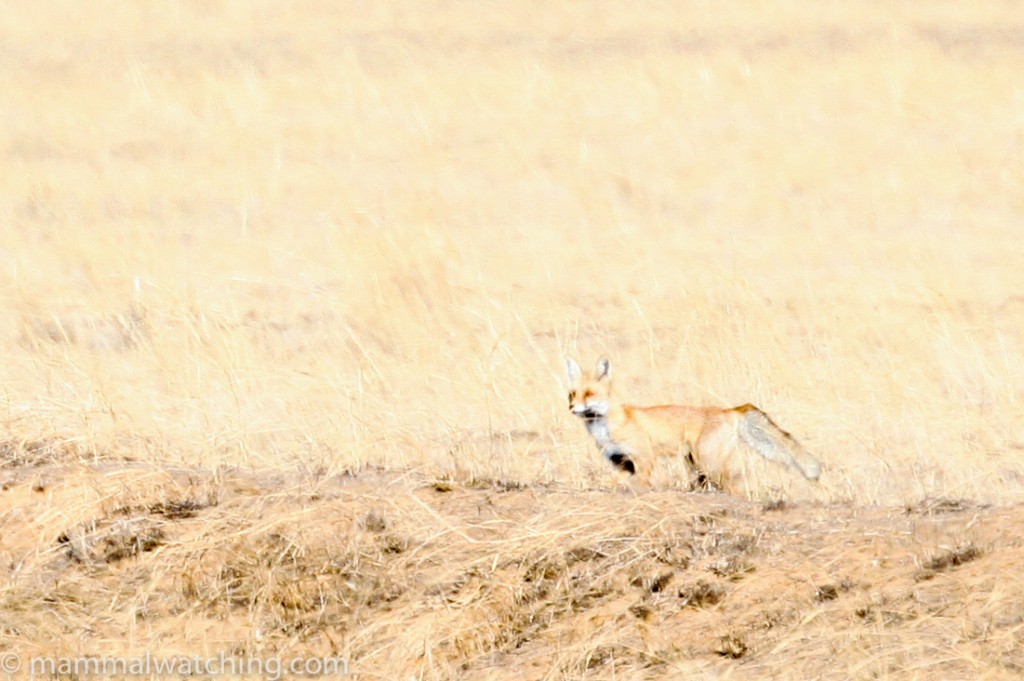
Red Fox, Vulpes vulpes
A night’s spotlighting was productive. Apart from numerous Saigas we saw several foxes, at least three of which were Corsac Foxes. But these – like the Saiga – were hard to get close to. We also saw several very impressive Great Jerboas (Allactaga major).
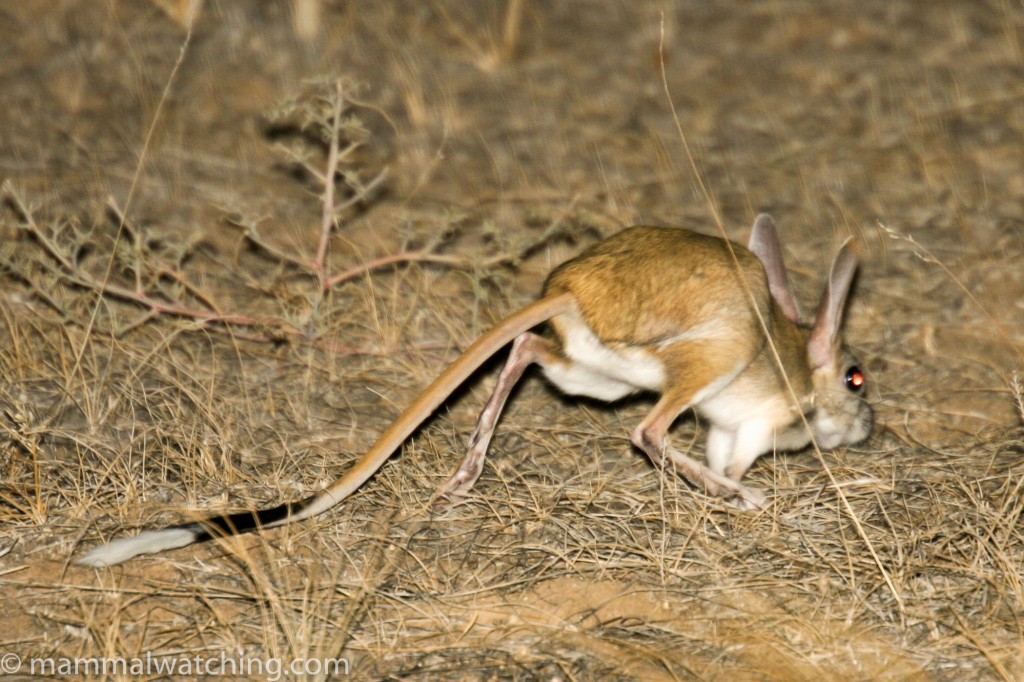
Great Jerboas, Allactaga major
It was difficult to be sure of which other species were present because of the language barriers. Sousliks (ground squirrels) are common in the summer but were hibernating already by early October. There were plenty of bats feeding around the park HQ and I guess they were living in the roof. Yonio seemed to think (or at least I think he did) that these were Kuhl’s Pipistrelles but I don’t know what he based his opinion on.

Saigas, Saiga tatarica
I set some Elliot traps to see what was around – I think Social Voles were a possibility – but caught nothing other than a Long-eared Hedgehog (a species I had seen just once before).
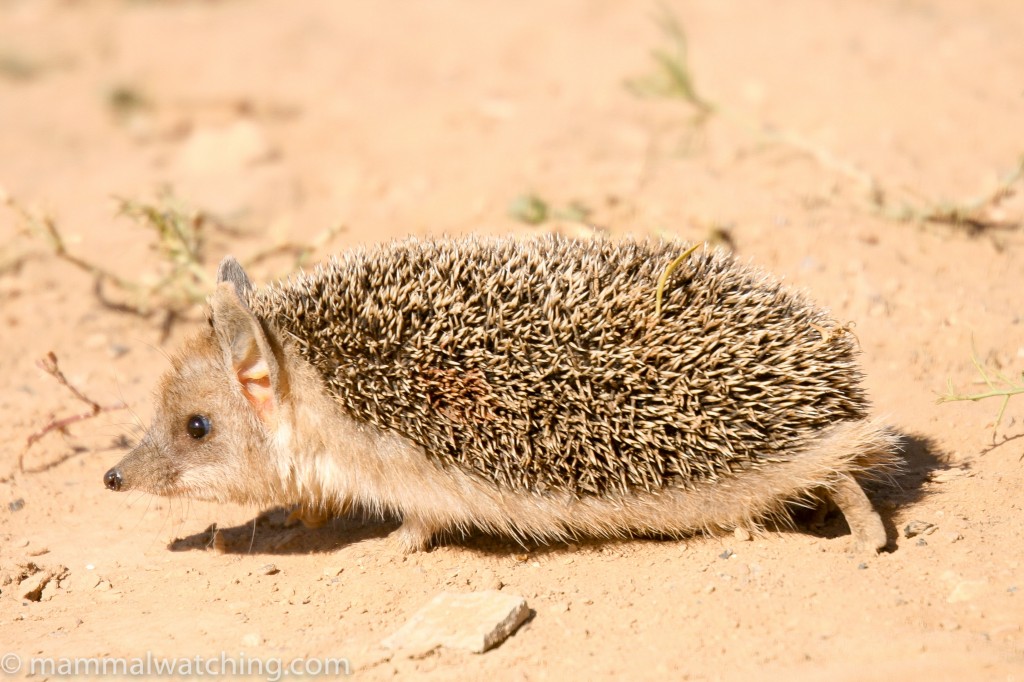
Long-eared Hedgehog, Hemiechinus auritus
If you what an authentic Russian experience and see some mammals in a top spot then Kalmykia is a place to go. Unless you think you can’t cope without a hot shower.
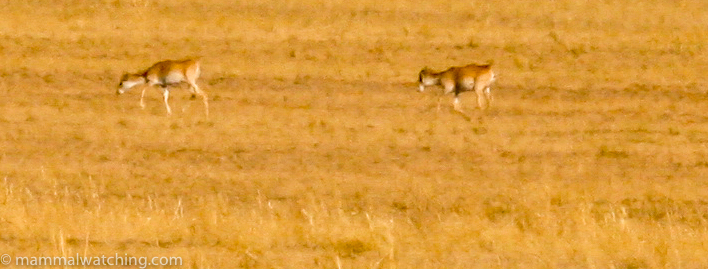
Saigas, Saiga tatarica
Community Reports
Stepnoi Nature Sanctuary (Saiga Research Trip), 2022: The Travelling Zoologists, 12 days with Saiga, Wolf and Wildcat.
Kytalyk National Park, Siberia, 2021: Vladimir Dinets, 5 days in a very remote area with some good species including Wolverine and Middendorf’s Vole.
Stepnoi Saigas, 2019: Mogens Trolle, 1 week of Saiga watching
Sea of Okhotsk, 2017: Alain Guillemont, 11 days & 12 species including Bowhead Whale and Ribbon Seal.
Siberia 2017, Royle Safaris, 14 days & 2 species including Siberian Weasel, with evidence and camera trap images of many more including Siberian Tigers.
Siberia 2017, Royle Safaris, 14 days & 9 species including Sable, Long-tailed Birch Mouse and – finally – Siberian Tigers!
Astrakhan Steppes, 2016: Ben MacDonald, 24 days & mammals including Saiga, Corsac Fox and Wolf.
Siberia, 2016: Royle Safaris, 2 weeks & 6 species including Siberian Weasel, Long-tailed Birch Mouse, plus evidence of many more, like Lynx and Tiger on the camera traps.
Sea of Okhtosk, 2016: Cheryl Antonucci, 12 days & 12 species including Northern Fur Seals, Lagha Seals, Dall’s Porpoises and – the holy grail – Ribbon Seals.
Siberian Tiger Tour, February 2016: Royle Safaris, 14 days with evidence of 21 species. Sightings included Ussuri White-toothed Shrew, Long-tailed Birch Mouse and Siberian Weasel.
Siberian Tiger Tour, December 2015: Royle Safaris, 14 days with evidence of 15 species including a Tiger on the camera trap. Sightings included Siberian Roe Deer, Ussuri White-toothed Shrew, Manchurian Hare and Siberian Weasel.
Baikal Seals, 2015: Dominique Brugiere, 3 days looking for – and seeing – Baikal Seals.
Siberian Tiger Tour, February 2015: Royle Safaris, 14 days with evidence of 18 species including sightings of Siberian Roe Deer.
Siberian Tiger Tour, December 2014: Royle Safaris, 14 days with evidence of 22 species including sightings of Siberian Roe Deer, Ussuri Shrew, Large-toothed Siberian Shrew, Siberian Flying Squirrel and Sable. And missing by minutes a Siberian Tiger.
Siberian Tiger Tour, February 2014: Royle Safaris, 14 days with evidence of 19 species including sightings of Ussuri Shrew and Sable. While one of the trackers photographed a Siberian Tiger.
Russian Arctic, 2013: Cheryl Antonucci, 2 weeks & 15 species including Walrus, Polar Bear, Musk Ox and Northern Pika.
Russian Far East, 2012: Adam Riley, 2 weeks and species including Arctic Fox, Dall’s Porpoise and Brown Bears.
Russia, Norway and Svarlbard, 2007: Coke Smith, 2 months in Russia and 31 species including Baikal Seals, a Sable and Bowhead Whales. Links to more photos on Coke’s sight are here: The Kuril Islands, Lake Baikal, The Commander Islands, Kamchatka, and Primorye (Siberia).
Also See
Caspian Seal sites, December 2021
Wild Saiga Watching Trips, January 2019
You can – apparently – track Amur Tigers at this lodge. Though seeing them is something else (see the comments here).
1 Comment
Leave a Reply
You must be logged in to post a comment.


roylesafaris
The lodge and reserve that is mentioned in the comments is one that i visit twice a year with as good a chance of seeing wild Siberian tigers as anywhere in the world (although that is still a small chance).
The tigers in this reserve are seen around 5-6 times a year but camera trap footage is almost daily. I travel there twice a year with Royle Safaris with groups and it is a wonderful place to visit and contribute to tiger conservation out there.
The last sighting was March 2016, but sightings in summer are very rare.
I have a picture of this sighting and also dozens of camera trap pics and videos on my Facebook page (www.facebook.com/roylesafaris7/photos/)
But Vladimir is correct seeing one is very tough and realistic expectations have to be set.
On another note we have had tracks and camera trap evidence of the Amur leopard cat in the reserve which was a first record for the Khabarovsk Krai (to our knowledge).